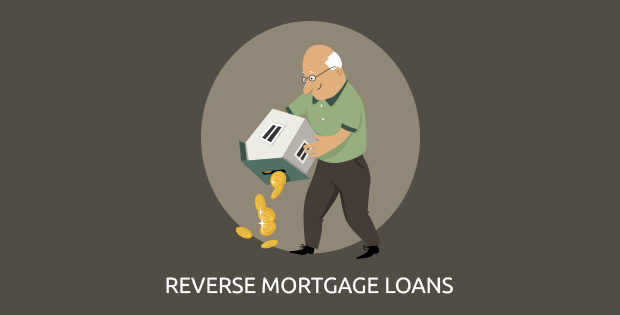
- About Us
- OUR OFFERINGS
- CALCULATORS
- RESOURCE CENTRE
-
Quick Links
- Existing Customers Benefits
- Become a Partner
- Pre-Approved Projects
- Home Loan App
- Blog
- CSR
- Locations
- Roi Switch Policy
- Co-Lending Policy
- Co-Lending Partnerships
- Customer Sensitization Program
- ROI Range
- Borrower Education - SMA/ NPA classification
- Borrower Awareness - RBI Ombudsman Scheme
- Borrower Awareness - procedure for handover of property documents
- NEWS CORNER
-
INVESTOR RELATIONS
- Financial Reports
- Investor Presentations
- Annual Reports
- Notices
- ESG Profile
- IEPF
- Investor Call Transcript
- Corporate Announcement
- Public Issue of NCD'S
- Qualified Institutional Placement
- Investor Relations Contact
- ISO CERTIFICATIONS
- Forms for Shareholder KYC-PAN-Nomination update
- Credit Ratings
- Statutory Advertisements
- ODR Portal
- Rights Issue
- Sustainable Financing Framework
- Disclosures under Regulation 46 of SEBI LODR
- CONTACT US
- Login
 Apply
ApplyOnline

India's 1st Completely Online Home Loan!
-
e-APPLY
-
e-SANCTION
-
e-DISBURSE
Start your eHome Loans Process Now!
Apply OnlineMCLR in Home Loan

- Home Loans Guide
- May 24, 2019
- VIEWS: 6701
The interest rate is one of the most important components of a loan, especially in the case of a high-value loan that lasts for 2 decades or more; the home loan. There is not a single borrower who does not want to benefit from a lower home loan interest rate. In April 2016, the Reserve Bank of India introduced a new guideline called MCLR under which borrowers could gain the benefit of cuts or reductions in home loan interest rates in real time. Let’s try to find out all about what is MCLR in a home loan.
What is MCLR?
'Marginal Cost of Funds Based Lending Rate or MCLR is simply the lowest interest rate offered by banks, housing finance companies and other lenders when a borrower takes out a loan. Typically, lenders cannot provide home loan interest rates which are lower than MCLR. Despite this, lenders can make some exceptions if they receive permission from the Reserve Bank of India.
As such, MCLR is basically the internal benchmark or the reference rate for all financial institutions. It defines the process that determines the minimum interest rate on home loans. The MCLR system was introduced in 2016, replacing the existing base rate system of 2010. Credit limit renewals and loan sanctioning is done according to MCLR norms since the introduction of MCLR.
What is MCLR rate in Home loan?
MCLR is linked to the repo rate and lenders’ fund costs. In case the repo rate changes, it impacts the floating interest rate on home loans. So, if the lender reduces the MCLR, the floating interest rate on the home loan will also reduce. While the reduced rate and MCLR will not affect the equated monthly instalment or EMI that you are paying, the loan tenure is definitely affected.
How is MCLR calculated?
To calculate MCLR, it is important to first consider all the sources from which banks borrow funds. Banks typically borrow funds from various sources such as savings accounts, current account, fixed and recurring deposits and so on. The borrower can refer to the interest rate of these borrowing sources to calculate the marginal cost of borrowing. Remember that the source of funds for banks is not just borrowing; it also entails equity.As per the formula defined by the RBI, MCLR home loan is calculated as under:
MCLR = Marginal borrowing cost x 92% + return on the net worth x 8%
According to RBI guidelines, banks are also mandated to maintain a minimum cash reserve ratio or CRR of no less than 4%. The bank does not earn any interest on this deposit. Under MCLR, it is possible for banks to obtain a certain amount of allowance called Negative Carry on CRR. Banks must also consider and take care of the operating costs. Remember that the bank has its own expenses which include the cost of raising funds, paying salaries to employees, opening multiple branches of the bank for customer convenience and so on. These charges cannot be billed to the customer. There is also a discount or tenor premium. The tenor is simply explained as the reset period for interest rates and is directly proportional to the reset period. As such, if the tenor is high, so is the reset period.
Therefore MCLR home loan depends largely on the tenor premium, the operating costs borne by the bank, the marginal cost of funds and the negative carry on CRR.
Final word:
MCLR offers the much-needed respite of lowered interest rates that borrowers require, but only borrowers with a floating interest rate on home loans can benefit from it. MCLR does not affect the fixed interest rate on home loans. It is important to remember that the bank considers deposit balances as well as other borrowings while it computes the marginal cost of funds.

Top up home loan vs personal loan a comparison to determine the better choice for loans
Taking on a loan of any kind is a financial responsibility. It is a debt that needs to be repaid, in full, based on the tenure chosen by the borrower. Most banks, housing finance companies and non-banking finance companies offer a myriad of loans to finance the different needs of customers.
- Home Loans Guide
- Jul 23, 2019
- VIEWS: 8946

MCLR in Home Loan
The interest rate is one of the most important components of a loan, especially in the case of a high-value loan that lasts for 2 decades or more; the home loan.
- Home Loans Guide
- May 24, 2019
- VIEWS: 6701

Types of Home Loan Charges
Most people fulfil their wish of becoming homeowners by taking out a home loan. It is the easiest way to afford a property as one can pay for the house in monthly instalments.
- Home Loans Guide
- May 24, 2019
- VIEWS: 8016
No Comments
Subscribe
Most Viewed Blogs
Categories
- Home Loans Guide 125
- Home Renovation Loan Guide 3
- Home Loan Transfer Guide 14
- Home Extension Loans Guide 1
- Loan Against Property Guide 28
- Home Loan Interest Rates Guide 2
- Others Guide 8
- Home Decor & Lifestyle Guide 5
- Plot Loan Guide 3
- PMAY Guide 5
- Uncategorized Guide 1
- NRI Home Loans Guide 5
- Financial Resolutions Guide 1
- New Year Resolutions Guide 1
Archives
- Mar 2020
- Jan 2020
- Nov 2019
- Jul 2019
- Jun 2019
- May 2019
- Apr 2019
- Mar 2019
- Feb 2019
- Jan 2019
- Dec 2018
- Nov 2018
- Jul 2018
- Jun 2018
- May 2018
- Apr 2018
- Mar 2018
- Feb 2018
- Jan 2018
- Dec 2017
- Nov 2017
- Oct 2017
- Sep 2017
- Aug 2017
- Jul 2017
- Jun 2017
- May 2017
- Apr 2017
- Mar 2017
- Feb 2017
- Jan 2017
- Dec 2016
- Nov 2016
- Oct 2016
- Jun 2016
- Apr 2016
- Mar 2016
- Feb 2016
- Jan 2016
- Dec 2015
- Nov 2015
- Oct 2015
- Sep 2015
- Aug 2015
- Jul 2015
- Jun 2015








